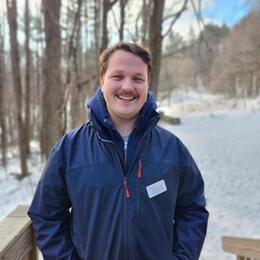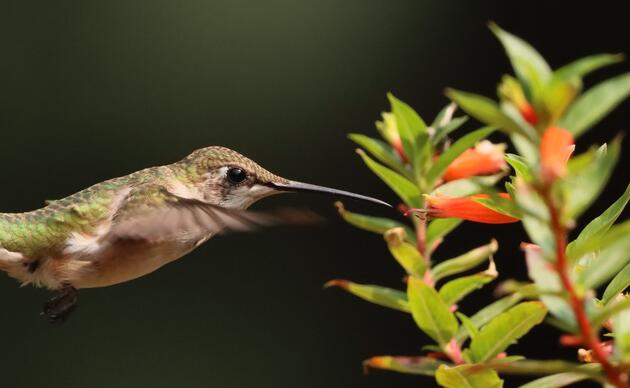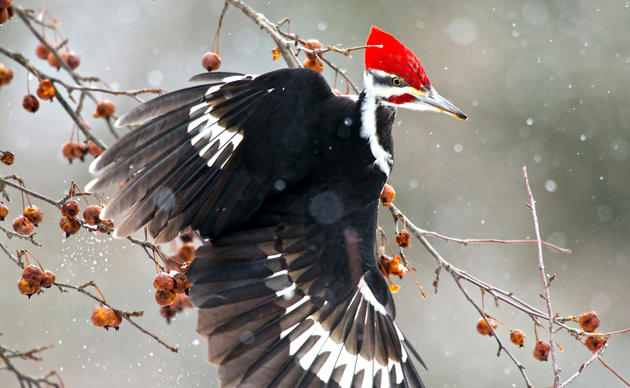At 5:00 AM on a misty Vermont morning, I found myself handing over my ID at the gate of a restricted military training base. I was there to meet Ali Wagner, a dedicated volunteer and lifelong nature enthusiast, for one of her early morning Grasshopper Sparrow monitoring sessions. Ali greeted me warmly, binoculars around her neck, clipboard in hand, ready for the day’s observations. Over the next three hours, I witnessed more than just the rare state-threatened Grasshopper Sparrows fluttering through the grasslands. I saw the profound impact one committed individual can have on wildlife conservation and community education.
Ali’s journey into bird conservation didn’t start in a classroom or lab, it began on horseback in the Vermont woods in the 1970s. A neighbor with a passion for birds piqued her interest, but it wasn’t until decades later, living off-grid in East Charlotte, that the call of a Veery truly sparked her curiosity. That curiosity led her to Lewis Creek Association and eventually to Audubon Vermont, where her passion for birds transformed into a powerful tool for science, education, and advocacy.
Ali was invited to begin monitoring Grasshopper Sparrows, a species with only two known breeding locations in Vermont, by Michelle Patenaude, who had carried out the work for 17 years. Recognizing Ali’s genuine curiosity and attention to detail, Michelle passed the torch with confidence. Ali took the responsibility seriously, following strict protocols, alternating survey routes, and submitting consistent data that helps scientists and conservationists understand population trends and habitat needs. On the training grounds, where soil quality limits vegetation growth, these grassland sparrows thrive. It's a unique and fragile habitat, one that needs constant monitoring to ensure the survival of this elusive species.
Ali’s work is about more than numbers. As we stood scanning the grassland, soldiers would occasionally pass by. Without missing a beat, Ali would wave them over, invite them to look through her spotting scope, and explain what she was doing. “How can you expect someone to care about something they don’t know about?” she asked me later. This is the heart of community science, bridging the gap between data collection and public engagement.
Ali is the first to admit her birding journey has evolved. Once focused on building her own life list, she found herself conflicted. Racing around Vermont to check off rare species meant more driving and more emissions, something that felt at odds with her values. So, she shifted her goals: record 150 bird species by sound in a year, share her scope with 100 strangers. These new benchmarks reflect a deeper purpose: to connect people to nature and make conservation personal.
Volunteering, for Ali, is not a pastime, it’s a lifestyle. Whether she’s leading Mid-Winter Bald Eagle Surveys with her young neighbor or working with kindergarteners in an afterschool birding program she created, Ali brings enthusiasm, patience, and deep knowledge to every project. Her work isn’t just about birds, it’s about building community, nurturing curiosity, and inspiring future environmental stewards. One child in her program once told her, “This is the best day of my life,” after spotting a Baltimore Oriole. For Ali, that was enough.
Ali sees data as a pathway to change. From her early work saving frogs and salamanders on Monkton Road as part of a larger team of volunteers, to contributing data that helped scientists advocate for a wildlife underpass, she knows that information, when gathered consistently and shared widely; can lead to meaningful conservation outcomes. “Nature can’t speak for itself,” she says. “Monitoring gives it a voice.”
She also recognizes that not everyone has the time to volunteer, but there are still ways to contribute: donate to conservation organizations, be open to learning, attend local bird walks, or just slow down and observe the natural world. Even a small act, like putting up turtle crossing signs or asking about a scope, can ripple outward.
Ali’s legacy is not just in the data she submits or the birds she counts. It’s in the people she engages, the children she inspires, and the quiet but steady message that volunteering matters. It matters for wildlife, for our communities, and for our own well-being. “Nature is healing,” she told me. “It’s good for the soul.”
As we packed up gear that morning and walked off the base, I realized that I hadn’t just spent the morning with a birder, I had spent it with a mentor, a community builder, and a quiet force for good. Ali Wagner’s work reminds us that conservation doesn’t always start in the halls of government or the labs of universities. Sometimes, it begins with a walk in the woods, a pair of binoculars, and the simple belief that by showing up, we can make a difference.






